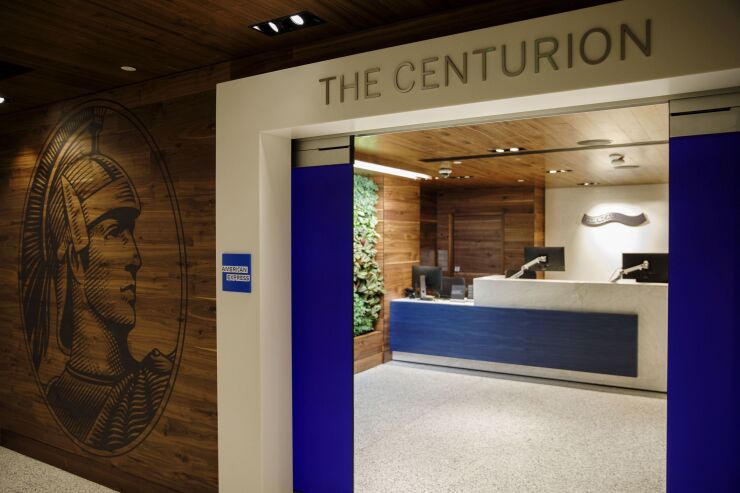Younger consumers are spending more on their American Express cards, shifting the card network's volume more toward merchandise with less emphasis on travel.
“Millennials are blowing it out,” Amex CEO Steve Squeri told analysts at a press conference on Tuesday when announcing the company’s earnings for the fourth quarter, noting that spending by young adults in the millennial and Gen Z segments increased by 50% in the last year.
The pandemic may permanently change Amex’s spending mix to 80% merchandise sales and 20% travel, from its traditional sales weight of 70% merchandise and 30% travel, in part because business travel will likely be “completely different” in the future, according to Squeri.
“I think as you have more people [working] in more remote locations, they may need to get together three, four, maybe five times a year to come to headquarters or to come to locations where they never had to come to before,” Squeri said.
As it stands, travel spending is at 82% of its pre-pandemic levels, and business travel remains in the doldrums, though consumer travel bookings began to rebound in recent weeks following a slowdown in December with the onset of the omicron variant of COVID-19, Squeri said.

Small-business credit card growth was strong in 2021 and Squeri expects to see that trend continuing, though small businesses are still watching their bottom lines and relatively few are revolving balances, he said. Consumer card payment rates are also high as consumer liquidity and cash flow remains strong, Squeri noted.
Amex’s total loans at the end of the year were up 20% over a year earlier, at $91.5 billion, but that’s still slightly under 2019 levels, when Amex had $92.2 billion of loans.
Amex has still not seen any negative impact from the surging buy now/pay later industry, Squeri insists.
“I don’t believe [this trend] is targeted at our customers,” he said, noting that Amex gives customers an installment loan option called Pay It and Plan It, which splits individual purchases into installment payments, but demand for those features aren’t particularly strong.
“When we’ve looked at buy now/pay later and that target audience, it tends to be lower FICO [scores], it tends to be debit users, and it tends to be utilized potentially as an acquisition tool, and that’s just not how we play our game, so I’m not all that concerned with buy now/pay later,” Squeri said.
Amex added 2.7 million new customers during the fourth quarter. Sixty percent of new customers added in 2021 were under age 40, and the company spent heavily to attract that audience, according to Squeri. Marketing expenses for the quarter soared to $9.8 billion, up 29% over a year earlier, driven by higher costs around marketing and customer benefits.
Amex’s revenue for the fourth quarter reached $12 billion, up 30% from a year earlier, while net income was $1.7 billion, up 20% from a year earlier. For the full year, Amex’s revenue was $42 billion, up 17% over a year earlier, with full-year net income of $8 billion, more than triple Amex’s income in 2021.





